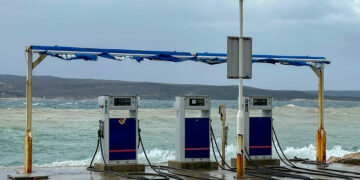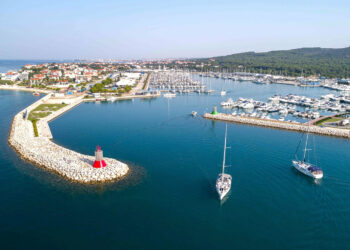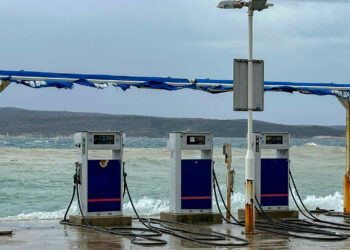The latest 7-day incidences of the coronavirus pandemic in Croatia raise eyebrows: Istria had one of the lowest levels in all of Croatia, even in all of Europe, with an average of 30.2 new coronavirus infections per 100,000 inhabitants (7-day incidence) in the last seven days, according to official figures from Croatia. Thus, the northern part of Croatia has already become the so-called “Green Zone”. If there were still the partial travel warnings, the travel warning for the region of Istria would already have to be lifted. Not least because of this, people in Istria are already thinking about cautiously opening restaurants and cafes.
Dropping incidence figures in all coastal regions
But not only in Istria, also in other divisions (comparable to governmental districts), 7-day incidence rates are currently declining dramatically: Lika-Senj is hovering around the 7-day incidence value of 62, as in the previous week, but in Primorje-Gorski Kotar the value has already dropped further significantly to 100.6, in Zadar to 101.7, and in Dubrovnik-Neretva to 67.6.
Croatia overall: 7-day incidence of 96
Overall, the 7-day incidence for all of Croatia is exactly 96.0, and the equally relevant 14-day incidence for the Republic of Croatia is 216.0. The proportion of positive coronavirus tests to the total number of persons tested was 11% during the week January 18, 2021, to January 25, 2021.
Corona measures in Croatia are working
Figures that are starting to make people want to go on vacation in Croatia again, especially since this is a long-term development and not a short-term improvement in the situation. The youngest EU member has partially enforced a lockdown against internally tough resistance, opening its external borders only to a few business travelers and commuters. The government’s tough Corona course appears to be paying off, as the numbers unmistakably show.
Give priority to vaccinating systemically important groups
In addition, according to Croatian media reports, the vaccinations that have already begun are planned to protect the most vulnerable groups of the population first, but then economically relevant groups of people in the service sector are to be vaccinated against the corona virus as a matter of priority. It was further announced that there are plans to vaccinate more than 46,000 workers who are in direct contact with tourists in the service sector against the coronavirus by the start of the tourism season to ensure that the 2021 tourism season runs as smoothly as possible.
Outlook for 2021 tourist season
These measures make sense, as the tourism sector contributes a good 20% of Croatia’s GDP. Croatia also suffered losses in its tourism business in the 2020 season, but these were limited by European standards.
Agencies and charter companies cautiously optimistic
Asking travel agencies and charter companies, the mood is already cautiously positive, as many tourists, especially those arriving in their own vehicles, are now convinced that Croatia will get the coronavirus pandemic under control. How it works is shown by Istria, which unsurprisingly turned green on the Europe-wide “Corona map” last week. And with the first warming rays of sunshine, the situation should once again improve significantly not only in the north, but along the entire coast.
Patience is currently still required
Understanding should raise many impatient at present for the fact that one still drastically restricts the entry to Croatia, because one would like to protect oneself to a large extent against the new, dangerous highly infectious virus strains. If one still has the necessary patience now, the coming water sports and vacation season should be secured without significant restrictions.
( | Data source: koronavirus.hr)
( | Data source: koronavirus.hr)
( | Data source: koronavirus.hr)













